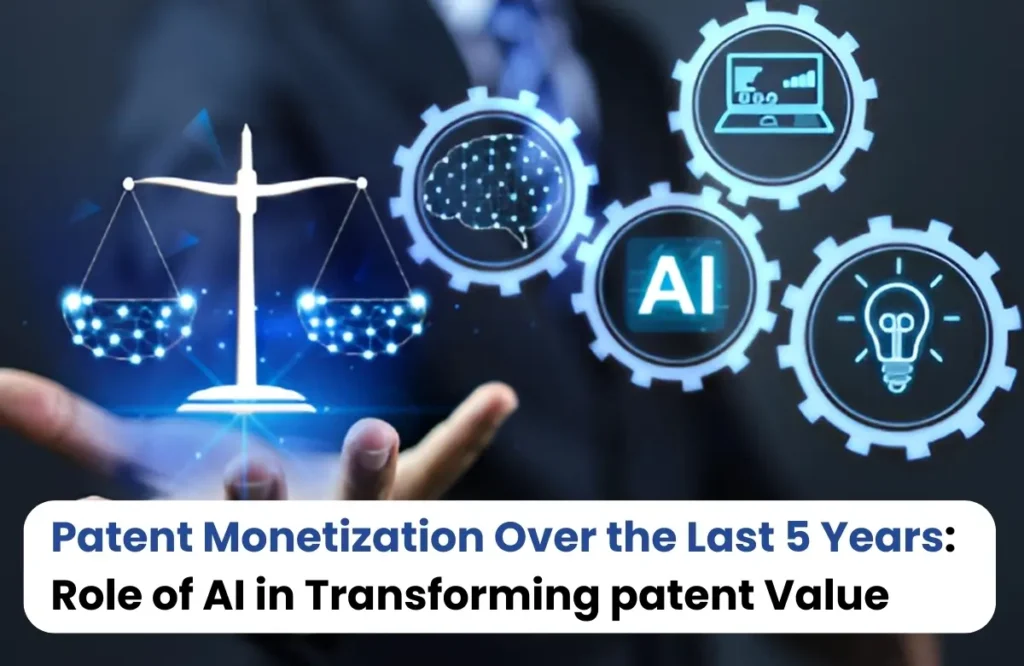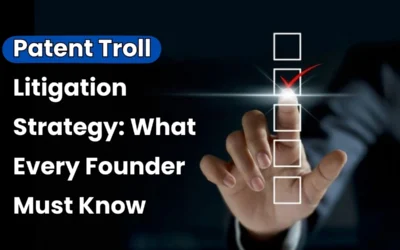
AI has taken over many areas, and now it is reshaping patent monetization as well. Today, companies are using AI at almost every stage of the monetization process—from the very beginning of portfolio analysis to the final stages of licensing, sales, or enforcement. But how is AI doing all these things in just a few years?
What Was Patent Monetization Like Before AI In The Last Few Years?
To truly understand the importance of AI in patent monetization, it is first necessary to see how the process worked without it.
- Research shows that up to 70–80% of corporate patent portfolios remain underutilized, generating no returns despite high maintenance costs.
- Patent valuation, when done manually, could take 3–6 months for a single portfolio and cost tens of thousands of dollars in expert fees.
- The Patent Monetization Market size increased by 64 billion USD in the last 3 years
How AI Transforms Each Stage of Patent Monetization
To understand the connection between AI and patent monetization, it is important to first look at the steps involved in the patent monetization process. Patent monetization usually begins with valuation, followed by assessment, then moves to identifying target markets, and finally to commercialization through licensing or sales. If necessary, it may also extend into dispute resolution or litigation. Today, AI is playing a crucial role in each of these stages, making the process faster, smarter, and more efficient than ever before.
- Portfolio Review
With AI, this step has become far more streamlined. Advanced systems can analyze vast databases, cluster similar inventions, and spotlight patents that hold the strongest promise for licensing, transfer, or strategic use.
- Patent Assessment
Today, AI-driven models bring more precision by examining prosecution history, claim breadth, litigation patterns, and citation networks. This approach gives businesses faster and more consistent insights into the potential worth of their patents.
- Market Identification
AI has reshaped this process by automatically matching patents with existing products and technologies, uncovering possible patent infringement and highlighting ideal targets for licensing. This helps companies clearly see where their intellectual property fits in the market landscape.
- Commercialization and Transactions
Now, AI adds efficiency by recommending licensing bundles, calculating fair royalty ranges, and even forecasting which companies are most inclined to strike a deal. The result is quicker negotiations and a higher likelihood of closing agreements.
- Enforcement and Disputes
AI is making enforcement more strategic by analyzing case precedents, court tendencies, and damage awards in similar cases to predict outcomes. It also speeds up claim analysis and document preparation, cutting down both time and expense in disputes.
What Do the Numbers Say About AI’s Role in Patent Monetization?
- 70%+ of companies report increased revenue from patent monetization in the past five years, supported by AI-driven insights.
- 26% of litigation funding in 2024 went into patent-related claims, up from only 8% in 2021, showing stronger monetization through enforcement.
- 32% of total legal funding was tied to patent litigation in 2024, reflecting growing confidence in patents as financial assets.
- 60% of technology subclasses globally now contain AI-related patents, showing how widespread AI innovation has become.
Read Also: USPTO Patent Fee Schedule 2025: PCT Search Fee Increases for KIPO, ILPO, and IPOS
Conclusion
AI has transformed the way patents are monetized. With the rapid rise of AI-related patents worldwide, its influence on shaping the future of patent value will continue to grow stronger.









